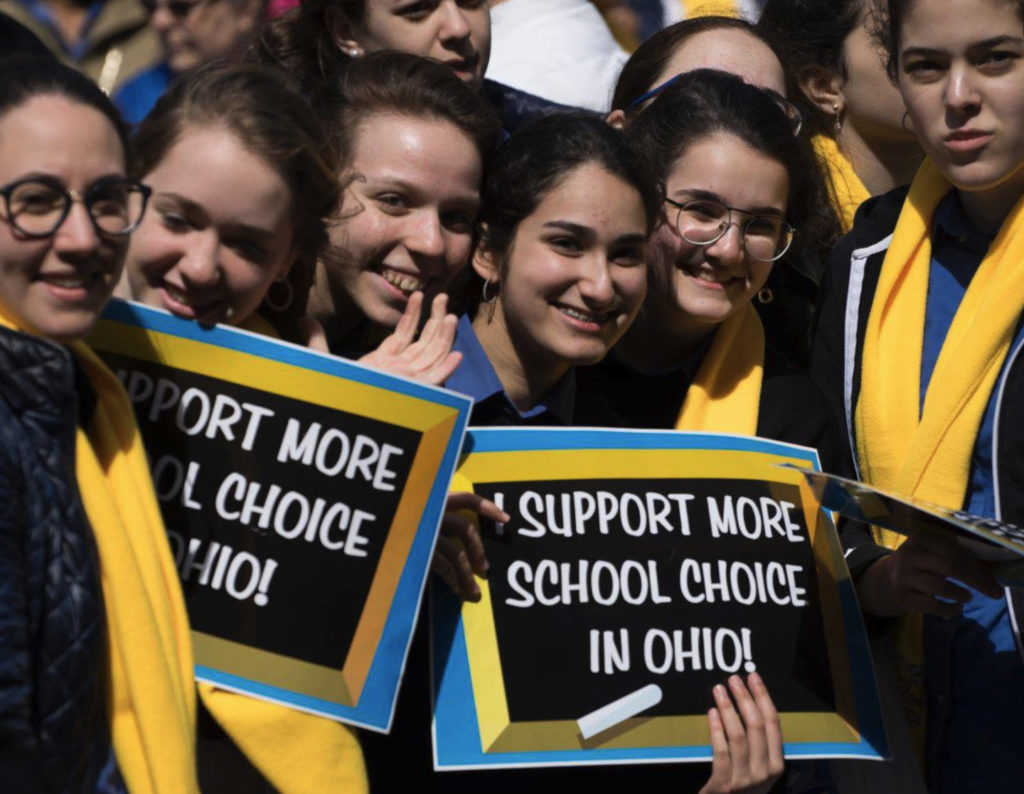Fordham study finds positive impacts of Ohio’s EdChoice program
(The Sentinel) – A new study from the Thomas B. Fordham Institute should allay concerns that school choice programs won’t benefit marginalized students.
The Fordham study, authored by Ohio State…

(The Sentinel) – A new study from the Thomas B. Fordham Institute should allay concerns that school choice programs won’t benefit marginalized students.
The Fordham study, authored by Ohio State University professor Dr. Stéphane Lavertu, examined Ohio’s performance-based and income-based EdChoice programs.
The Executive Summary says, “Overall, the analysis provides solid evidence that the performance-based EdChoice program led to racial integration, had no adverse effects on revenues per pupil, and increased student achievement in public school districts. It also reveals no credible evidence that the income-based EdChoice expansion harmed districts in terms of segregation, revenues, or student achievement.”
Not only did public schools not lose money on a per-student basis, but academic achievement was higher across the board, and the program actually reduced racial and ethnic segregation by approximately 10 to 15 percent than it would have been had districts not been exposed to the program.
“Specifically, as a result of the EdChoice program, Black, Hispanic, and Native American students attended schools with a greater share of White and Asian American students than they would have in the absence of the program,” the Fordham study found. Moreover, while district enrollments were 10 to 15 percent lower than they otherwise would have been as well, total district spending per pupil (including both capital outlays and operational spending) was no different than it would have been had districts not been exposed to the EdChoice program. The reduction, according to the study, was largely driven by relative declines in the enrollment of Black students rather than Asian American, Hispanic, or White students.
In other words, a lot of Black and Hispanic students used the EdChoice programs to leave public schools and attend private schools.
Additionally, the study found that actual spending might have increased at the district level, regardless of actual enrollment.
“There is suggestive evidence that the program in fact led to a relative increase in districts’ operational spending per pupil,” the study authors wrote. “That is because EdChoice had no impact on districts’ ability to raise local revenue. Combined with the decrease in enrollments, this dynamic led to a 10 to 15 percent increase in local revenue per pupil. Consistent with these estimates, the analysis reveals no statistically significant impacts on district property values, local property tax rates, local property tax revenues, levy passage rates, or state-defined fiscal stress designations.”
Most significantly, the Fordham study found marked increases in student outcomes.
“The academic achievement of district students — as measured by the state’s performance index — was significantly higher than it would have been had districts not been exposed to the EdChoice program,” the study found. “For the average student in a district exposed to performance-based EdChoice, their district’s achievement went from approximately the second percentile (the twelfth-lowest-achieving Ohio district) to approximately the sixth percentile (the thirty-seventh-lowest-achieving Ohio district). This effect is consistent with the program targeting low-achieving schools, thus increasing average district proficiency rates among remaining students. The results are also consistent with a rigorous study indicating that the competitive pressures of performance-based EdChoice had a null or positive impact on Ohio’s traditional public schools during the program’s early years.”
The Fordham study, the authors write, simply found “no credible evidence that the income-based EdChoice expansion harmed districts in terms of segregation, revenues, or student achievement.”
And that while some schools eligible for income-based EdChoice did have increases in racial segregation and declines in achievement, those all began well before 2006 when the Ohio voucher program was initiated.
“Instead, the analysis indicates that these long-term trends in district segregation and achievement would have been worse in the absence of the performance-based EdChoice program,” the study says.
Choice invigorates rural education in Florida
These results jibe with another recent study out of Florida, which showed — far from destroying rural schools — choice is reinvigorating them and improving achievement across the board.
According to Education Week, Florida now ranks No. 3 in the nation in K-12 achievement and has ranked in or near the Top 10 for a decade.
Florida also now ranks No. 1, No. 1, No. 3, and No. 8 on the four core tests of the National Assessment of Educational Progress, once adjusted for demographics. NAEP is considered the gold standard for standardized tests.
Additionally, Florida ranks No. 2 in the nation in the percentage of seniors who have passed Advanced Placement exams — while having a higher rate of low-income students than every state but one in the Top 10, and Florida’s high school graduation rate was 52 percent in 1998 and is 90.1 percent today.
Elizabeth Patton, director of the Americans’ for Prosperity Foundation-Kansas, found the results wholly unsurprising.
“The Ohio report and many others around the country have shown us time and again that focusing on funding students instead of systems is how we truly bridge the education gap and improve outcomes for all Kansas kids — regardless of zip code,” she said via email.
Perpetually low achievement in Kansas and school management’s refusal to address the crisis is explored in Giving Kids a Fighting Chance with School Choice.



